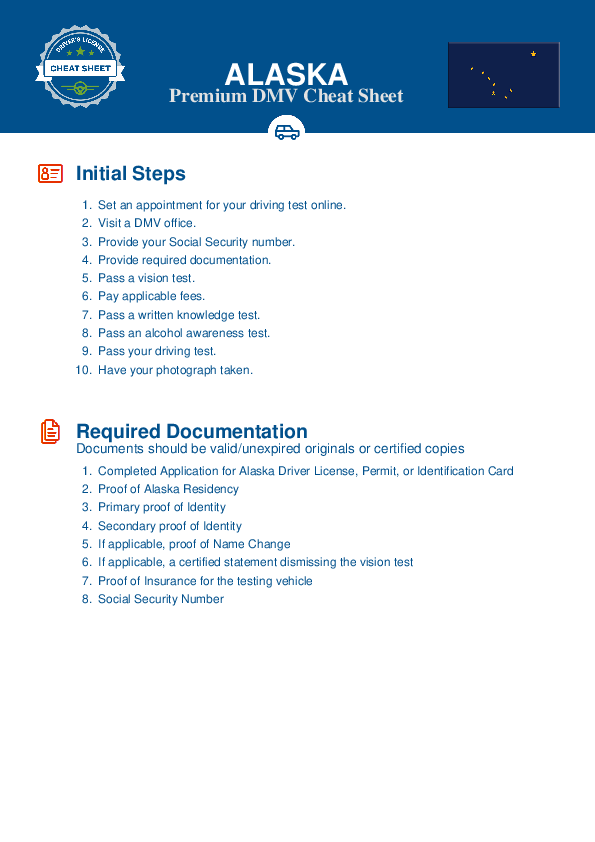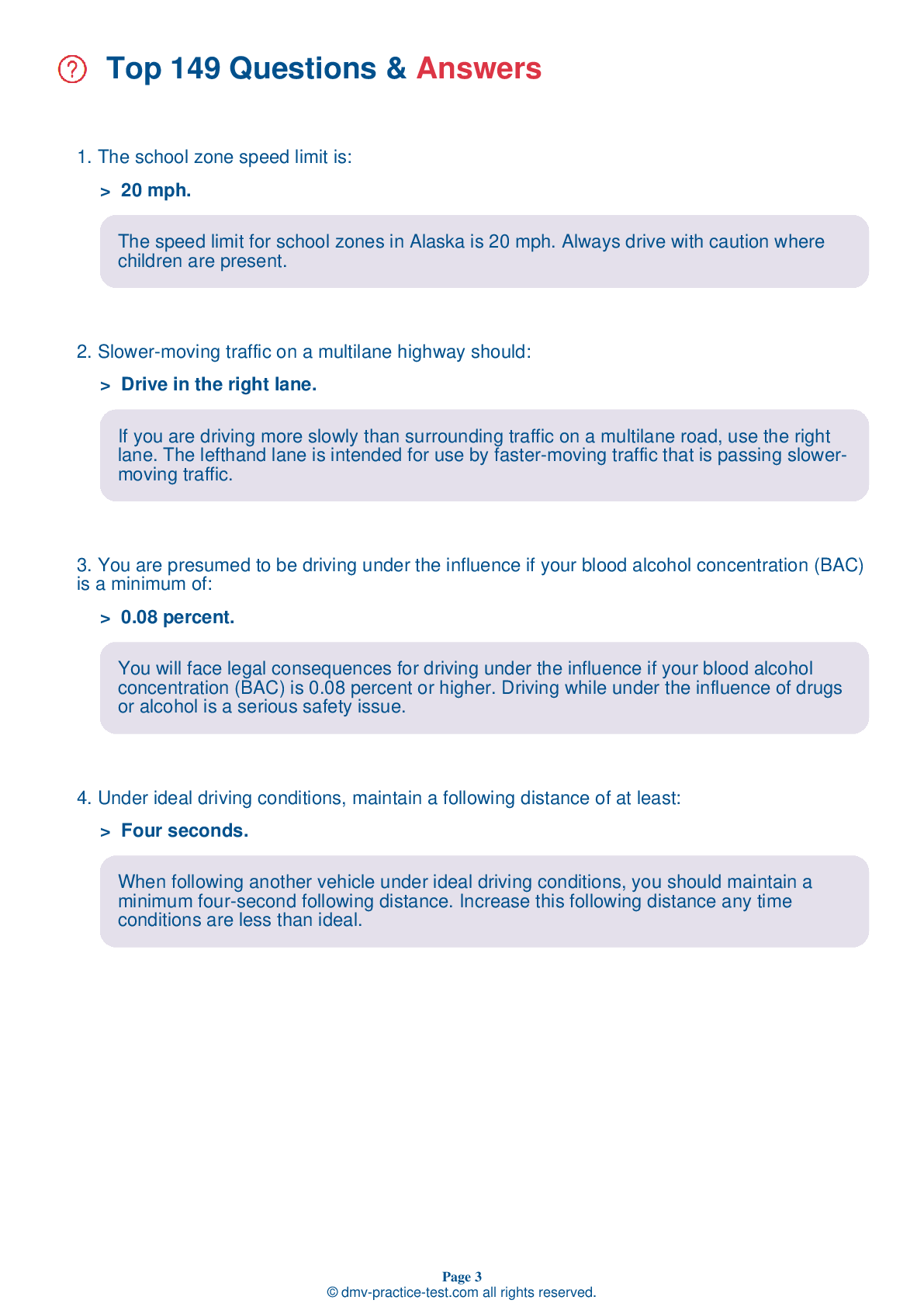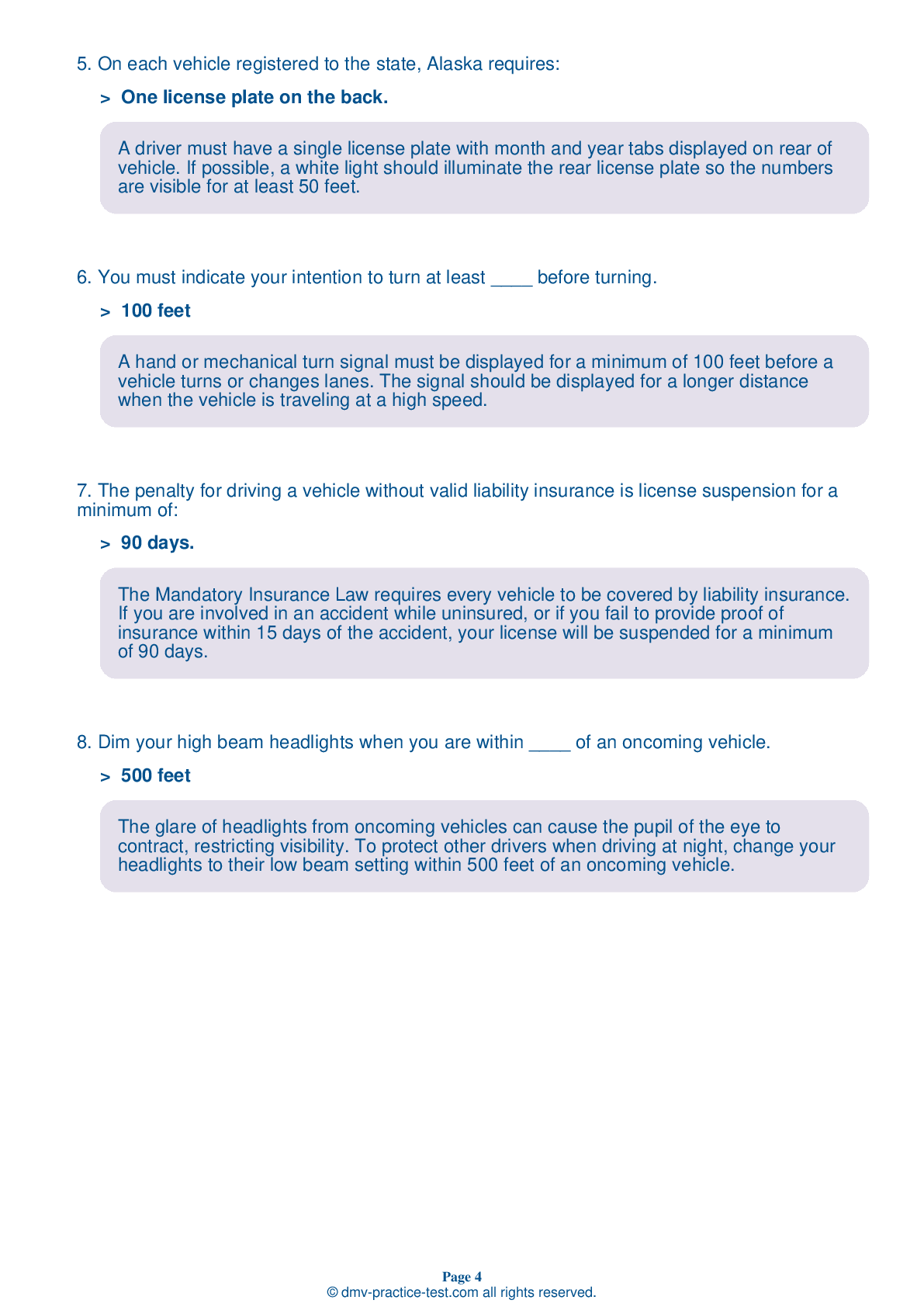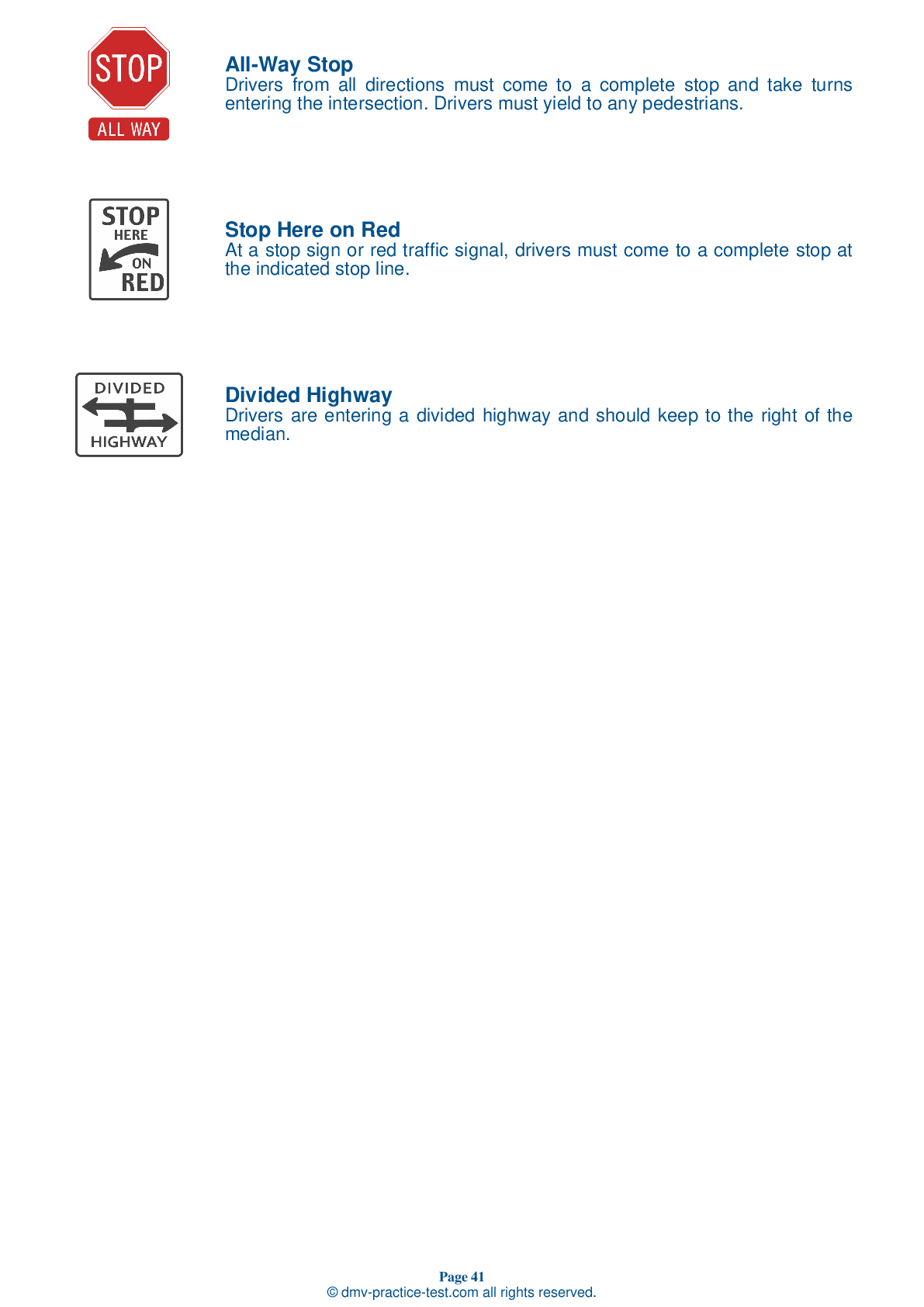FREE Alaska DMV Practice Test #23
This Alaska DMV practise tests has just been updated for January 2025. It contains questions based on the most essential traffic signs and limitations from the Alaska Driver Handbook for 2025. Use actual questions that are very close (often identical!) to the DMV driving permit test and driver's licence exam to prepare for the DMV driving permit test and driver's licence exam.
To help you recall the topics, each practise test question includes a suggestion and explanation. The written component of the official DMV test will include questions about road rules, traffic signs, and driving statutes, as well as information from the Driver Handbook.
To get the required passing mark, you must correctly answer 16 out of 20 questions. Take our DMV practise exam to help you prepare for your Alaska instruction permit or driver's licence.
The DMV exam is available in multiple languages.
Using any form of testing aid will result in an automatic failure, and the DMV may take further action against your driver's licence, so don't do it.
1 . This sign means:
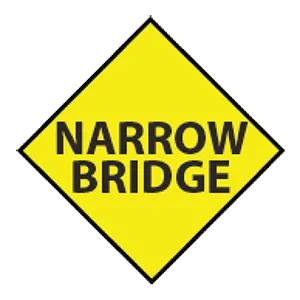
Warning signs are used to warn drivers about upcoming hazardous conditions and are usually yellow with black markings. This sign warns drivers that an upcoming bridge may be too narrow to meet or pass a truck and that they should be careful.
2 . To drive safely at night, you should:
At night, visibility is reduced. Take steps to make driving in the dark more safe for you and the other drivers on the road.
3 . When approaching a railroad crossing, you should:
When you see any signs indicating a nearby railroad crossing, you should slow down, look for a train, and be ready to stop. If the red warning lights are flashing or the gate is down, you must stop 15 to 50 feet before the railroad tracks. Do not try to go around the gate.
4 . Round signs indicate:
Round signs warn drivers of an upcoming railroad crossing area. Drivers should use extra caution when approaching a railroad crossing.
5 . An orange sign with black letters means:
Signs in construction areas are usually diamond-shaped and orange with black lettering. Use extra caution when approaching or passing through a work zone.
6 . After stopping for a school bus that is unloading children:
After stopping for a school bus that has its stop arm extended and its lights flashing, watch for children walking along the side of the road. You should always drive with caution when driving near children.
Need Car Insurance? No problem!
Compare the best rates in Alaska and find a personalized policy that meets your needs.
1. Are You Currently insured ?
2. Married ?
3. Do you own your Home?
4. Do you have more than 1 car ?
5. Have you or a Family Member Honorably Served in U.S. Military ?
6. Your Name
7. Age
8. Zip code
IMPORTANT REMINDER:Auto Insurance is Mandatory to drive in Alaska. Get covered before you hit the road to avoid any fines.
Ranked by best match
